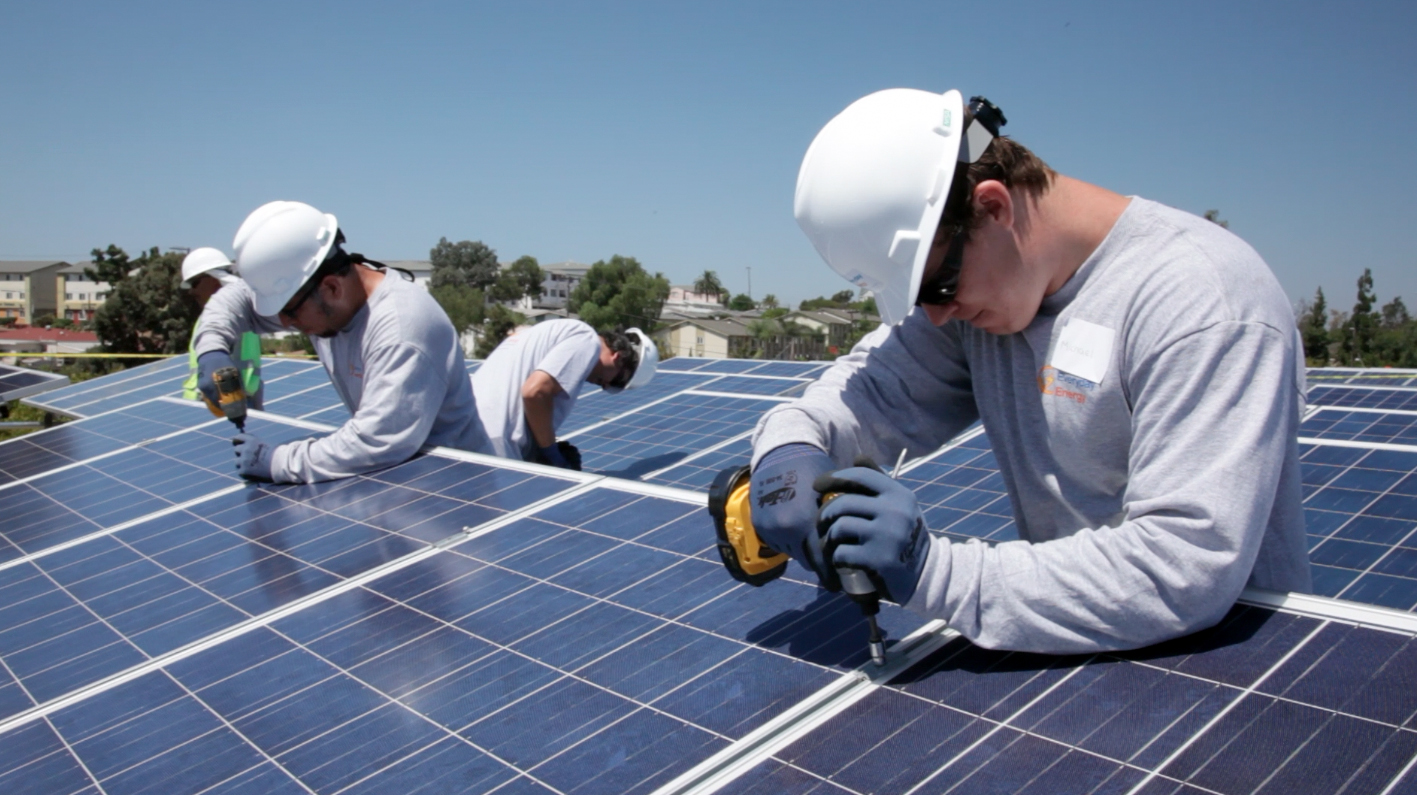There has been considerable interest in green energy in recent years. As part of this trend, an increasing number of homes and businesses are utilizing solar panels to meet some of their energy needs. Solar technology has become a central component of the renewable energy movement, with rooftop photovoltaic (PV) systems and large-scale solar farms expanding rapidly across California and the United States.
With the growth of solar power, however, comes an increased need for skilled installation, repair, and maintenance. This means electrical workers, technicians, and construction laborers are more frequently exposed to solar equipment, creating new categories of workplace risks.
Installation and Maintenance: The Role of Electrical Workers
A considerable amount of work is required for the installation and maintenance of such panels. This includes work by electrical workers, construction teams, and specialized solar technicians. Proper installation requires handling PV modules, inverters, grounding systems, and rooftop wiring.
Tasks often involve climbing onto roofs, connecting circuits, and testing current levels — all activities that, if improperly handled, can be dangerous. OSHA has recognized solar panel installation as an industry with elevated risk factors, requiring compliance with standards such as OSHA 1926 (Construction Standards) and NFPA 70E (Electrical Safety in the Workplace).
Some dangers can arise for electrical workers and other personnel involved in solar panel installation and maintenance. This includes risks of electrical accidents. Solar panel systems can generate a significant amount of direct current (DC) energy, which behaves differently from alternating current (AC). Unlike AC, DC does not pass through zero voltage, meaning shocks can be more sustained and damaging to the human body.
Electrical Hazards in Solar Panel Work
Being exposed to DC energy as a result of a workplace accident could subject a solar panel worker to major injuries. Electrical burns, arc flashes, electrocution, and secondary accidents (such as falls from rooftops during an electrical shock) are among the most common hazards.
According to the National Fire Protection Association (NFPA), arc flash incidents alone injure or kill hundreds of electrical workers each year in the United States. In solar panel work, the risks are magnified because technicians often operate in outdoor conditions, on elevated surfaces, and in proximity to energized equipment.
Beyond electrical hazards, solar workers also face physical risks, including musculoskeletal injuries from lifting heavy panels, heat stress from working in direct sunlight, and fall-related injuries. Each of these can lead to serious health consequences, requiring medical care and extended recovery.
Among the factors that can impact the safety of solar panel workers is the information they have regarding the DC energy situation during installation or maintenance work. Having accurate information on whether the area they are working on has DC energy present could help a worker avoid situations that could lead to electrical accidents. This is why proper training, lockout/tagout procedures, and the use of personal protective equipment (PPE) — including insulated gloves, voltage detectors, and fall protection harnesses — are critical.
Workers’ Compensation for Solar Panel Injuries
When pursuing workers’ compensation to help with the effects of such injuries, there are some critical decisions a worker may have to make regarding their claim. Workers’ compensation in California typically covers medical treatment, wage replacement, disability benefits, and vocational rehabilitation for employees who are hurt on the job.
However, the process is not always straightforward. Injured solar panel workers may encounter disputes with insurance adjusters, delays in medical evaluations, or disagreements over whether an injury was work-related. For example, if an electrical burn leads to long-term disability, an insurer may attempt to limit benefits, leaving the worker without adequate financial support.
Given the complexity and impact of such decisions, the information a worker has when making them can have a considerable impact. California’s Division of Workers’ Compensation (DWC) sets strict deadlines and reporting requirements. A worker must notify their employer promptly, file a claim within the statutory time limits, and follow the medical evaluation process. Failure to meet these steps could compromise benefits.
This is why having access to quality information and guidance, as represented by a skilled workers’ compensation attorney, can be crucial for an injured solar panel worker when pursuing a claim. An attorney ensures compliance with deadlines, negotiates with insurance providers, and helps workers decide between settlement options such as stipulations with a request for award or compromise and release agreements.
Technological Advances: The DC “Hot Stick”
Now, there are some challenges with gauging whether DC energy is present in a given area of a solar panel system. Recently, a new probe has been developed to address these problems and provide an accurate method for testing such energy. It is called the DC “Hot Stick.”
The researchers who developed the probe hope it will serve as a helpful device for detecting DC for electrical workers, first responders, and other professionals. The DC Hot Stick enables real-time detection of live direct current, thereby reducing the risk of accidental contact and facilitating workers’ ability to verify safety conditions before commencing repair or maintenance tasks.
One wonders if this device (and others like it) will have a major impact on the safety situation of electrical workers involved in solar panel work. While new technology can improve conditions, the presence of safety devices does not eliminate the legal and medical complexities of workplace accidents. Even with advanced tools, workers injured on the job must turn to the workers’ compensation system for medical treatment and financial recovery.
Source: phys.org, “DC Hot Stick developed for first responder, worker safety,” Aug. 14, 2017
The Broader Impact of Solar Workplace Accidents
Accidents involving solar workers have consequences beyond the individual. Families often face financial stress, employers may experience project delays, and the renewable energy industry itself must contend with reputational risks if safety incidents rise. According to the U.S. Bureau of Labor Statistics, electrical work remains among the top 10 most hazardous occupations. As the solar industry grows, regulators are paying closer attention to safety compliance.
By emphasizing prevention through training, PPE, and emerging technology, alongside ensuring strong access to workers’ compensation, the industry can better protect those who are driving the clean energy transition.
Frequently Asked Questions
What are the main risks for solar panel workers?
Electrical shocks from DC current, burns, arc flashes, falls from rooftops, and musculoskeletal injuries are among the most common risks. Heat stress and repetitive strain injuries are also significant.
Can solar panel workers receive workers’ compensation if injured on the job?
Yes. Workers injured while installing or maintaining solar panels may be eligible for workers’ compensation benefits in California. These benefits may include medical care, wage replacement, disability coverage, and rehabilitation services.
What safety measures help reduce accidents in solar panel work?
OSHA training, the use of PPE (personal protective equipment), compliance with NFPA 70E standards, lockout/tagout procedures, the use of insulated tools, and emerging technologies, such as the DC Hot Stick, all help reduce risks.
Why should an injured solar worker hire a workers’ comp attorney?
Workers’ comp claims can be complex, with insurance disputes, medical evaluations, and settlement options that may affect long-term rights. An attorney ensures your claim is filed correctly, negotiates with insurers, and fights for the maximum benefits available.
Are workers’ comp laws the same across states?
No. Workers’ compensation laws vary by jurisdiction. This article addresses California law, where solar panel installations are growing rapidly and legal protections are in place for injured workers. Consulting with a California workers’ comp attorney ensures you understand your specific rights.
Protecting Solar Panel Workers: Legal Help When You Need It
Electrical accidents in the solar industry can change lives in an instant. If you or someone you love has been injured while working with solar panels, the decisions you make during your workers’ compensation claim will be critical to your recovery.
At Hussain & Gutierrez, we are committed to representing injured workers throughout California, including those in the rapidly expanding solar industry. Our attorneys can guide you through the workers’ comp process, fight for the benefits you deserve, and ensure your rights are protected.
Contact Hussain & Gutierrez today for a confidential consultation.



